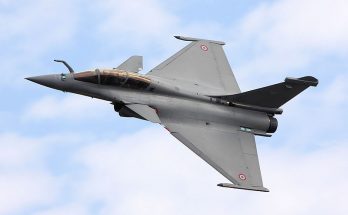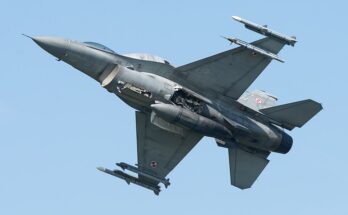
The Russian air defense system Pantsir-S has received a hypersonic missile.
Speaking to state-owned TASS Russian News Agency, Valery Slugin, the chief designer for air defense systems at Shipunov Design Bureau of Instrument-Making, said that the Pantsir-S is being armed with a new hypersonic missile. He told the media outlet, “There are two missiles that fight the entire range of targets. One is standard, while the other has been developed recently and is hypersonic. It can develop a speed of Mach 5 and more.”
Slugin said that the new missile will reach targets much faster, effectively increasing the rate of fire of the Pantsir-S, whose fire control system will be “freed faster” from the initial target to acquire and engage other targets. He added, “Besides, there is no need to load a large amount of explosives into the missile’s warhead for the fragments’ dispersal; the higher the impact speed, the greater the fragments’ efficiency.”
The name of the hypersonic missile was not disclosed. Also, Slugin did not identify whether the missile has been accepted into operational service or if instead it is still in the development and testing phase.
Slugin discussed other changes being considered for the Pantsir missile system. For example, its transporting and loading vehicle (TLV) may become capable of firing missiles, he told TASS. Slugin said, “We plan to develop a new support vehicle that will carry an even bigger payload.” The “transporting and loading vehicle may become a transporting combat vehicle,” Slugin noted.
The vehicle will be able to engage targets based on data provided from the battery’s main radar. Slugin said, “We can install a simplified control system: the vehicle will receive target designation from the main unit, but will fire missiles on its own.” TLVs can carry up to 24 missiles, whereas the regular launcher unit has a maximum of 12. The TLV may be able to carry even more missiles if it is equipped with smaller ones.
Slugin did not disclose whether the military has placed an order for the update to the TLV. The development timeframe for the modified transporter/loader was not specified.
To date, Pantsirs in operational service have downed around 100 drones, Slugin said. This figure includes those deployed to Syria as well as “other regions.” He referenced militant drone attacks on Russia’s Hmeymim air base, which is guarded by Pantsir systems. “Initially, the terrorists tied up to 10 bombs to their drones, which made them perfectly visible on a radar. Later, they reduced the ordnance number to just two, and significantly reduced the drones’ speed. We had to apply some effort to teach the systems how to take down such targets,” he said.
In Syria, Russia’s forces utilize the Pantsir-S1 to provide point defense around Hmeymim air base, where the air contingent and a number of longer-range air defense systems are deployed. Russia has also transferred the Pantsir system to Syrian control.
In 2018, one of Syria’s Pantsirs was targeted and destroyed by an Israeli missile, footage of which was published later.
#Syria : Israel Video footage showing destruction of #Russia Pantsir S1 system that was just delivered to Assad in last night strikes. Video: pic.twitter.com/qri3nNtas7
— Joyce Karam (@Joyce_Karam) May 10, 2018
Slugin said that the system had fired its missiles but did not change positions from its firing location, making it vulnerable to attack.
Military markets analyst, covering Eurasia, Middle East, and Africa.




